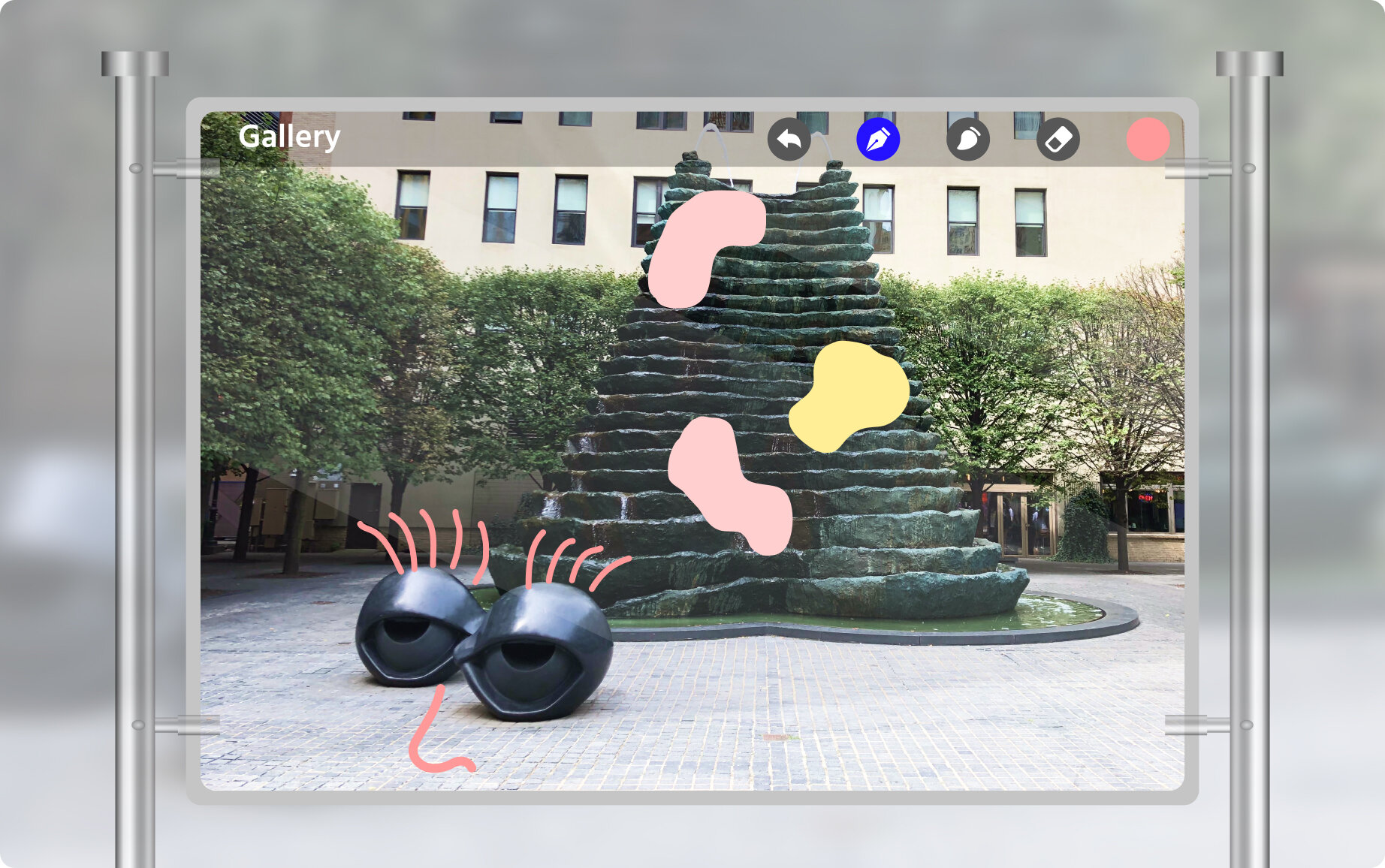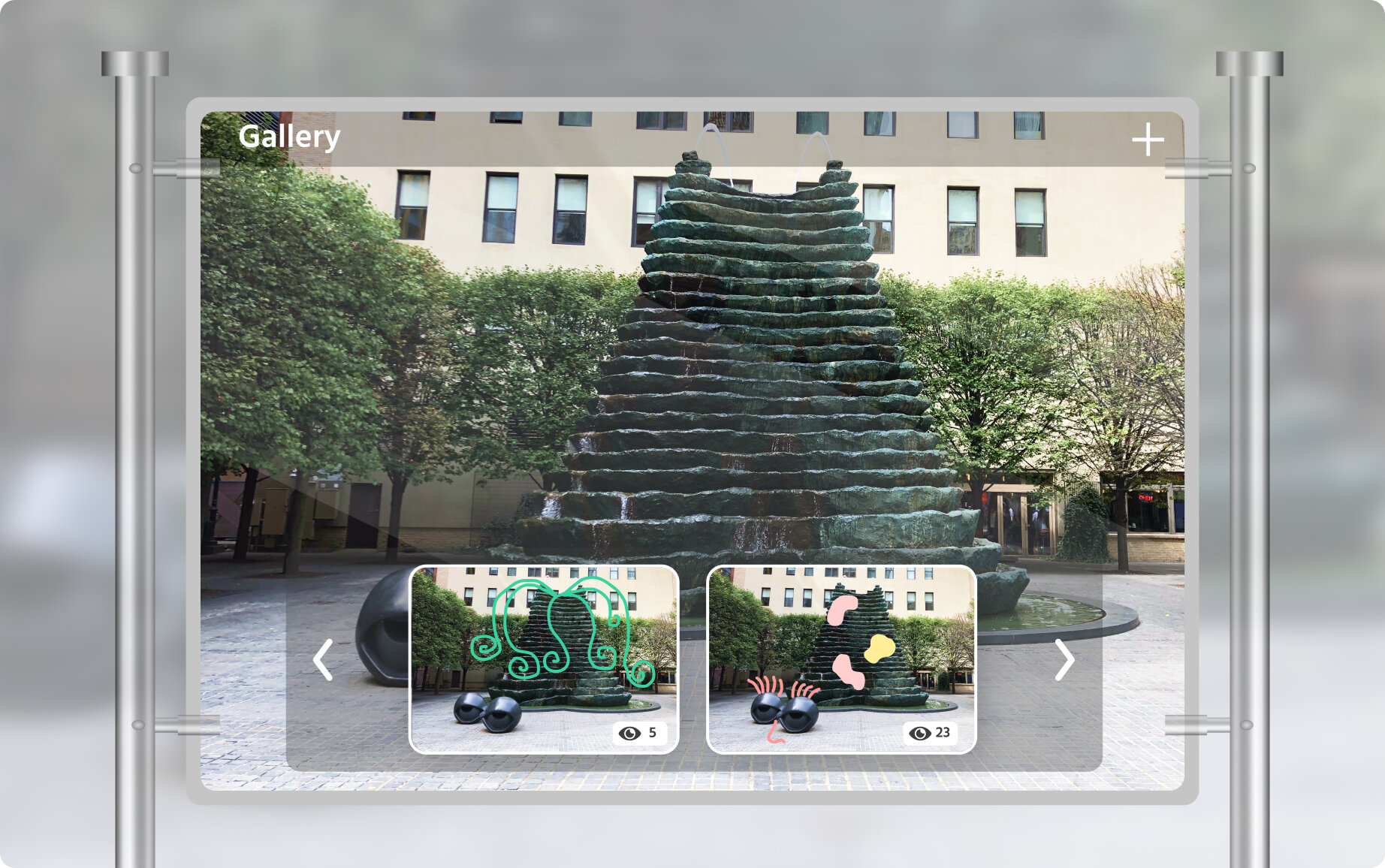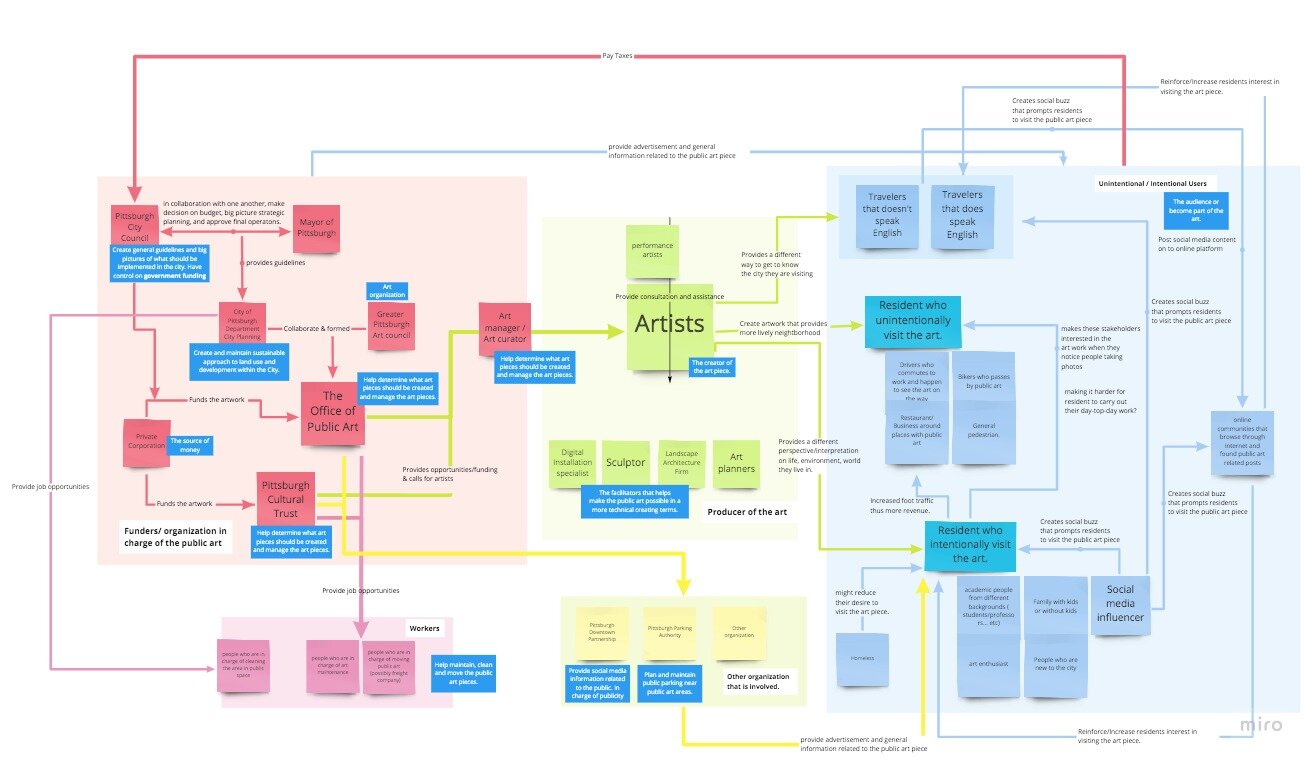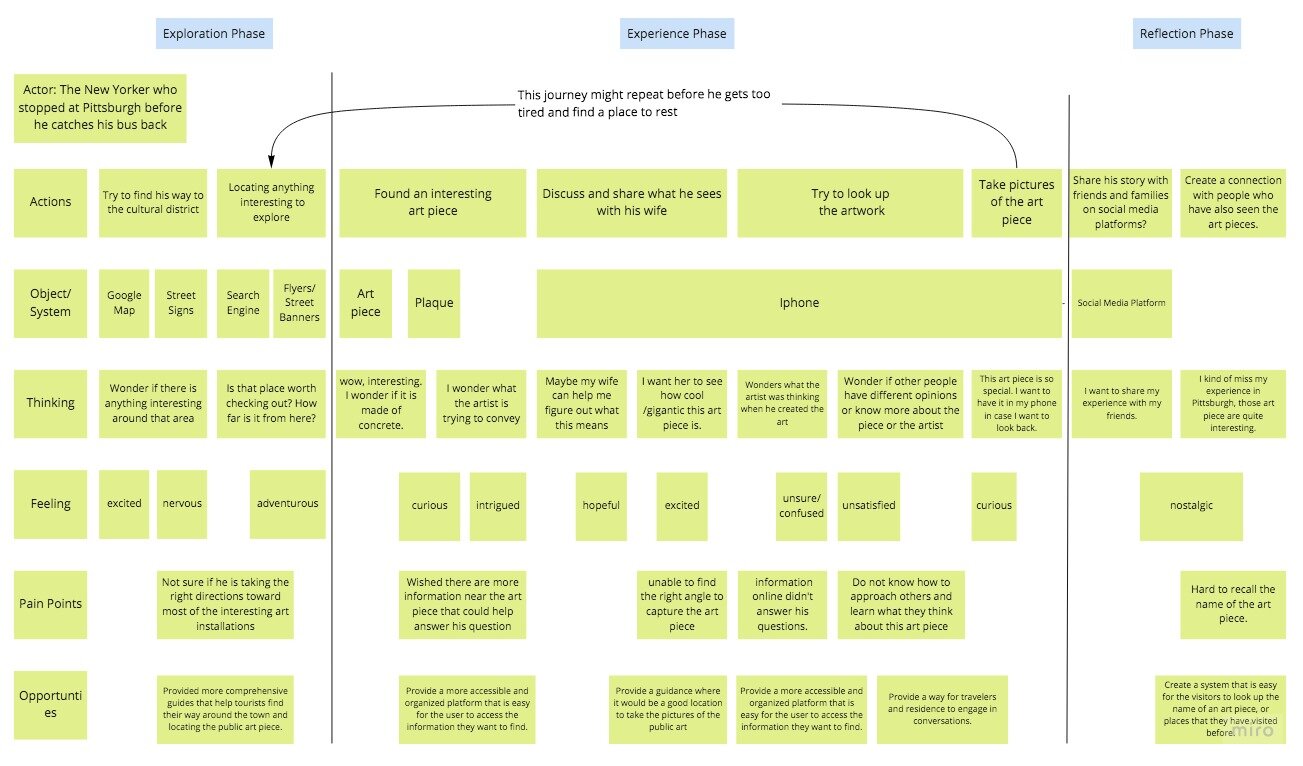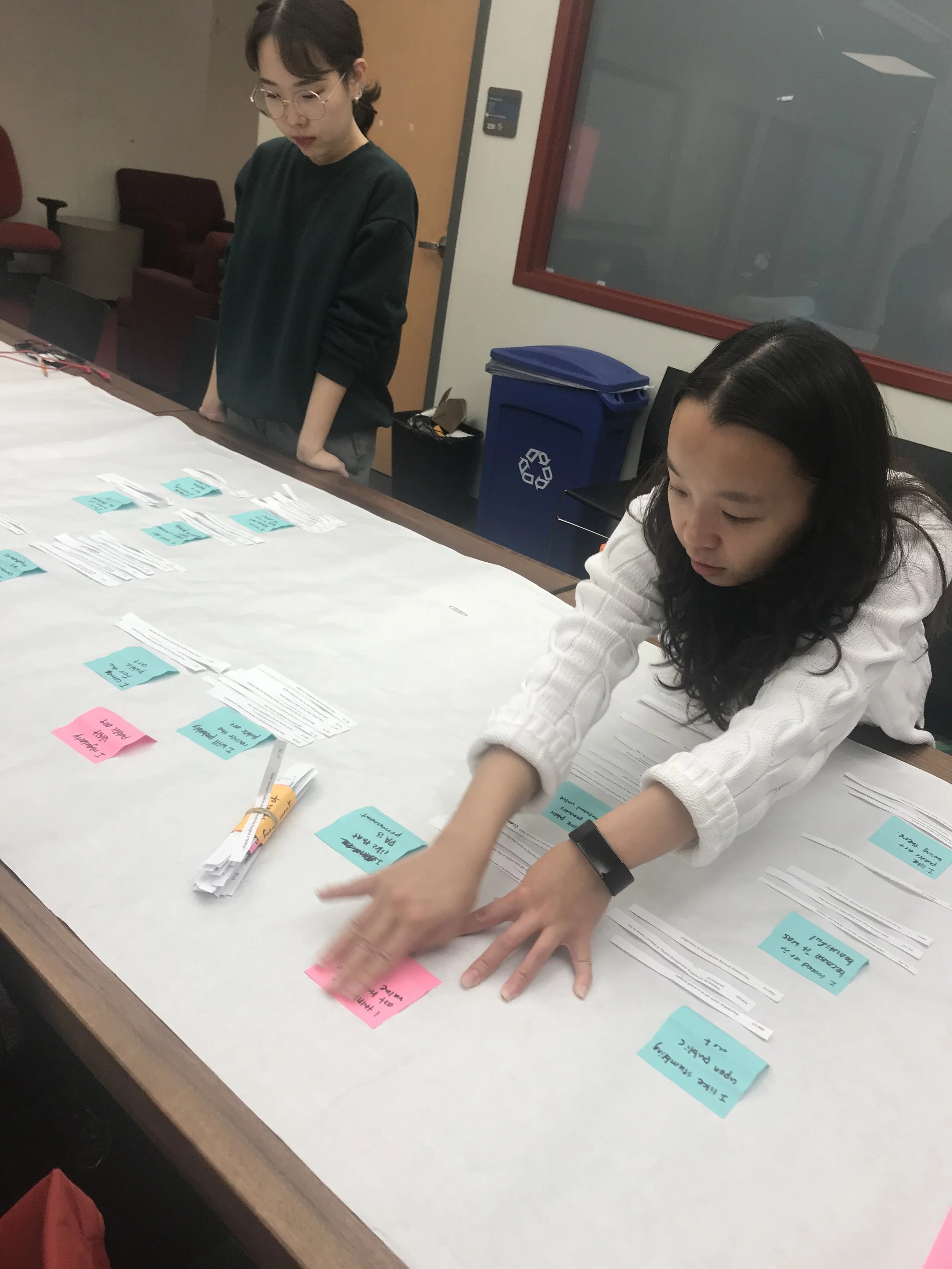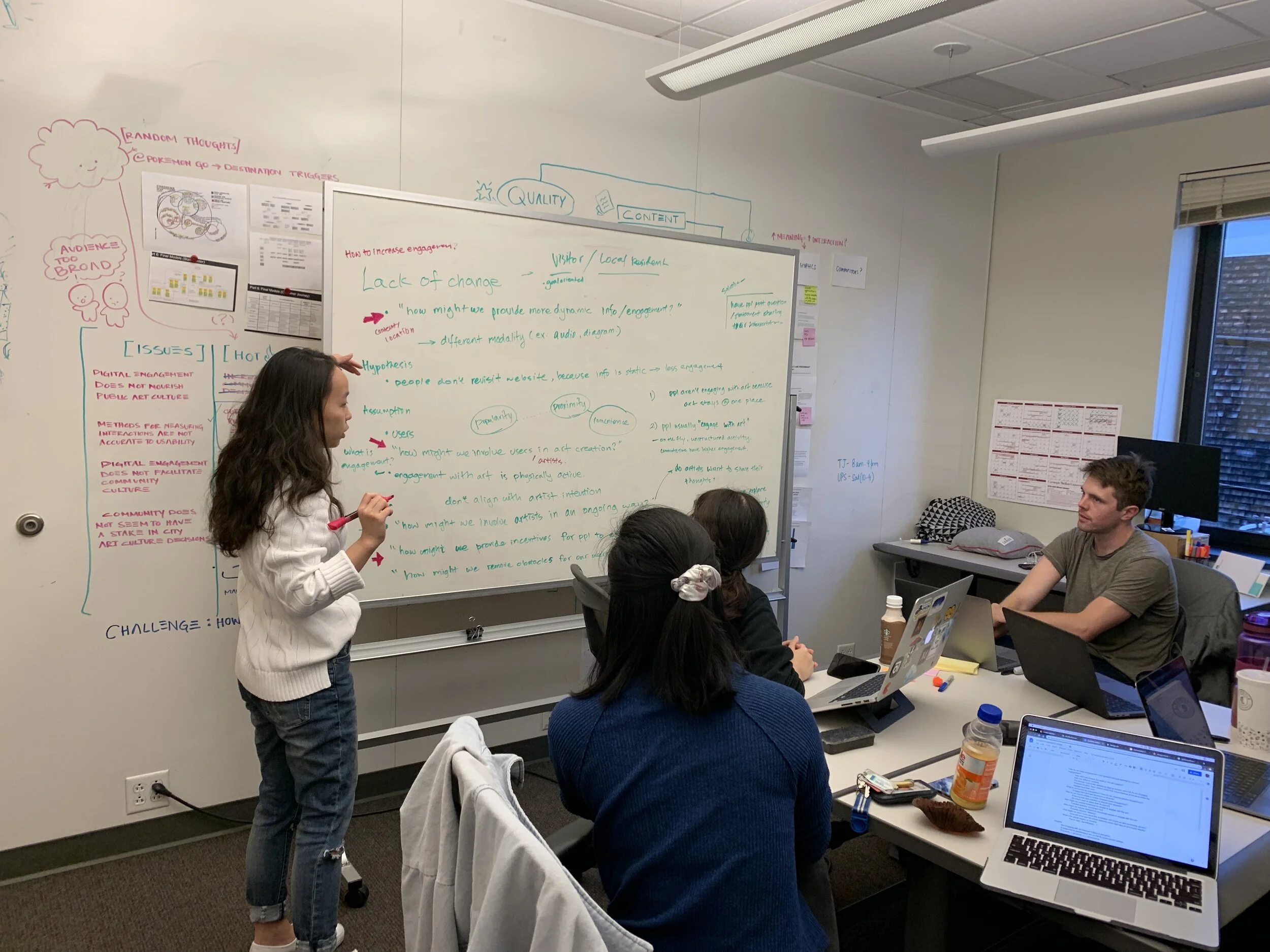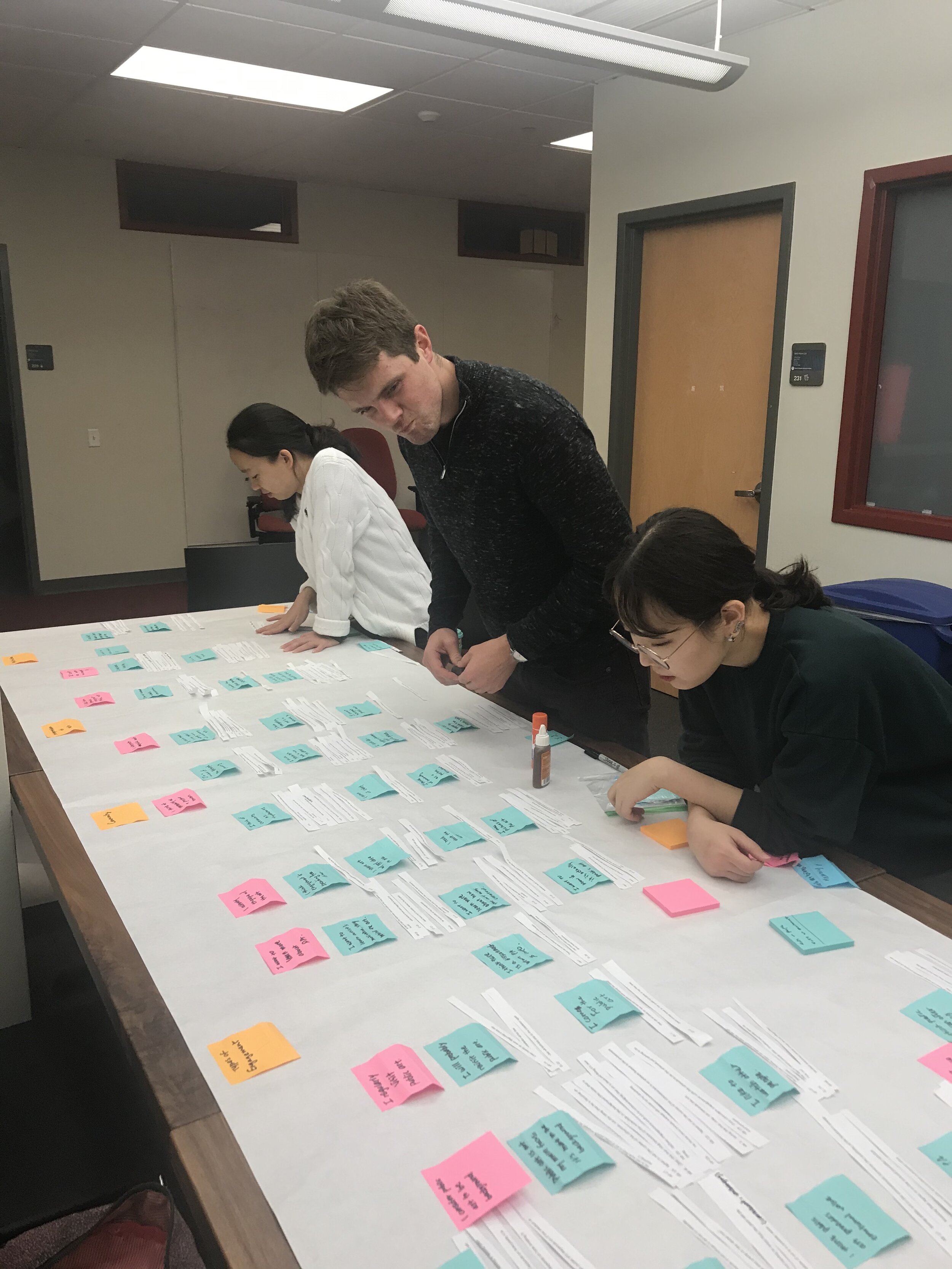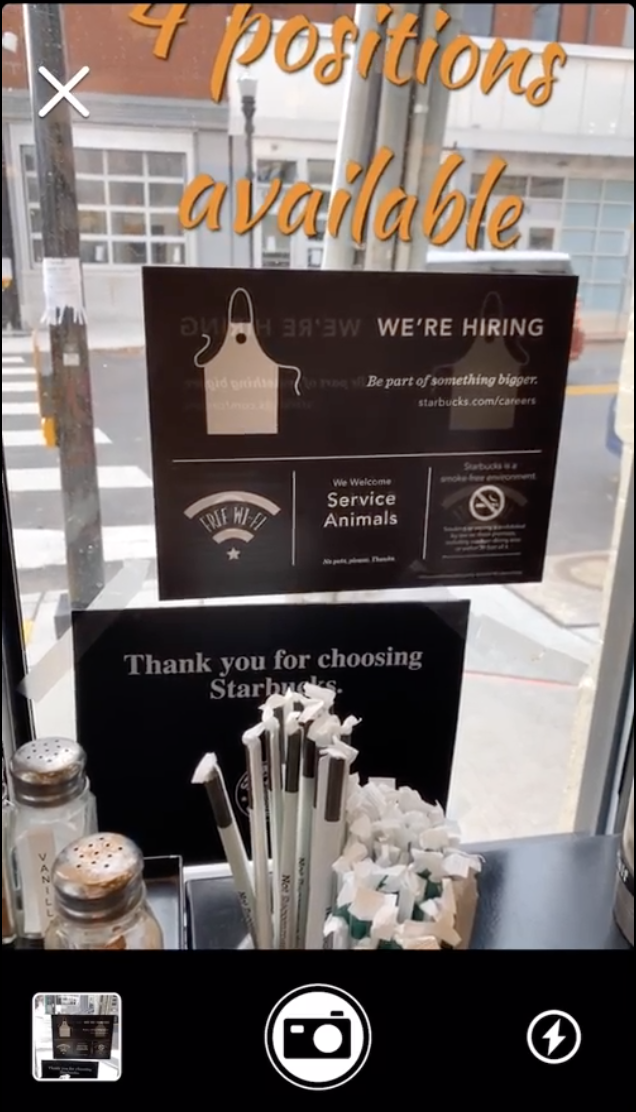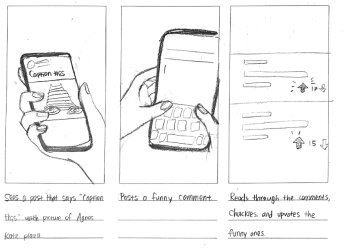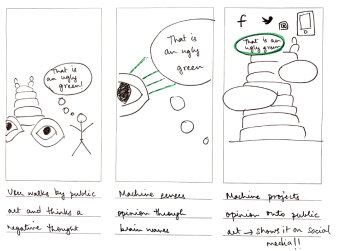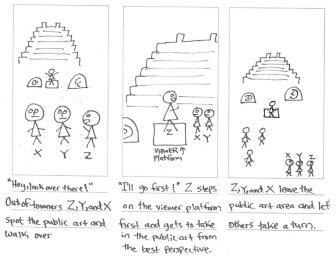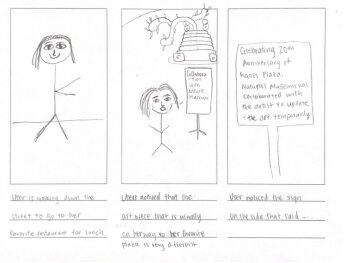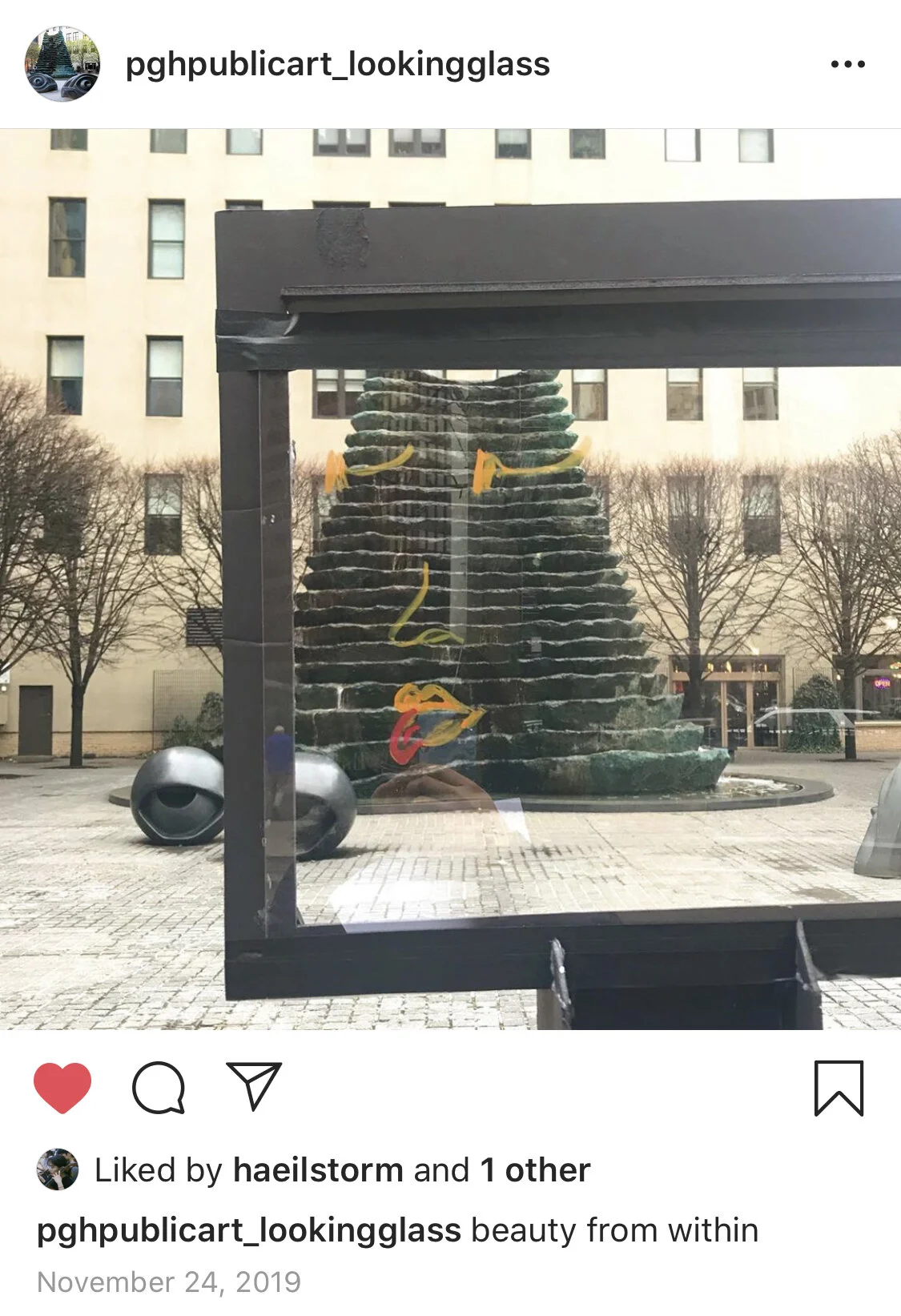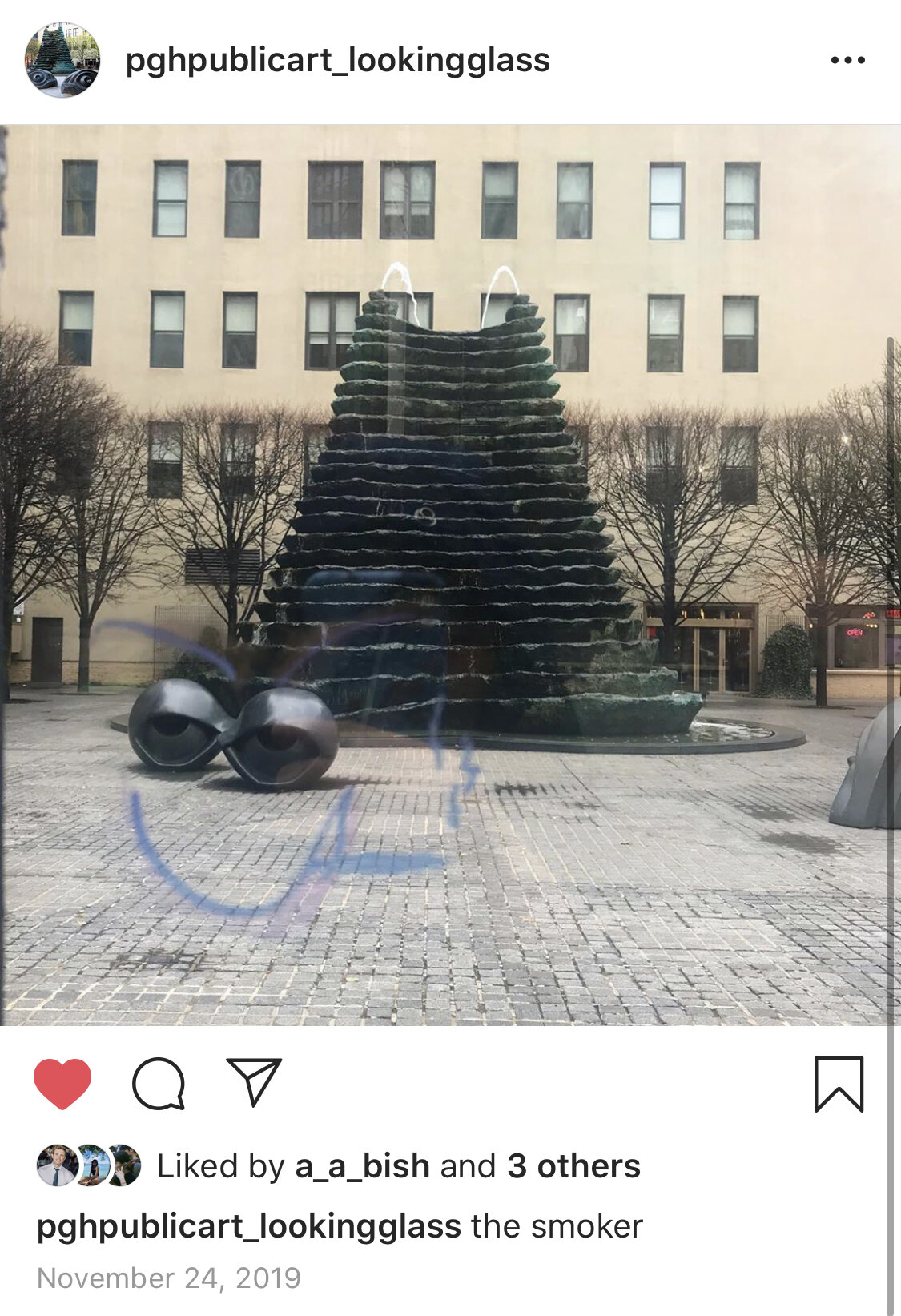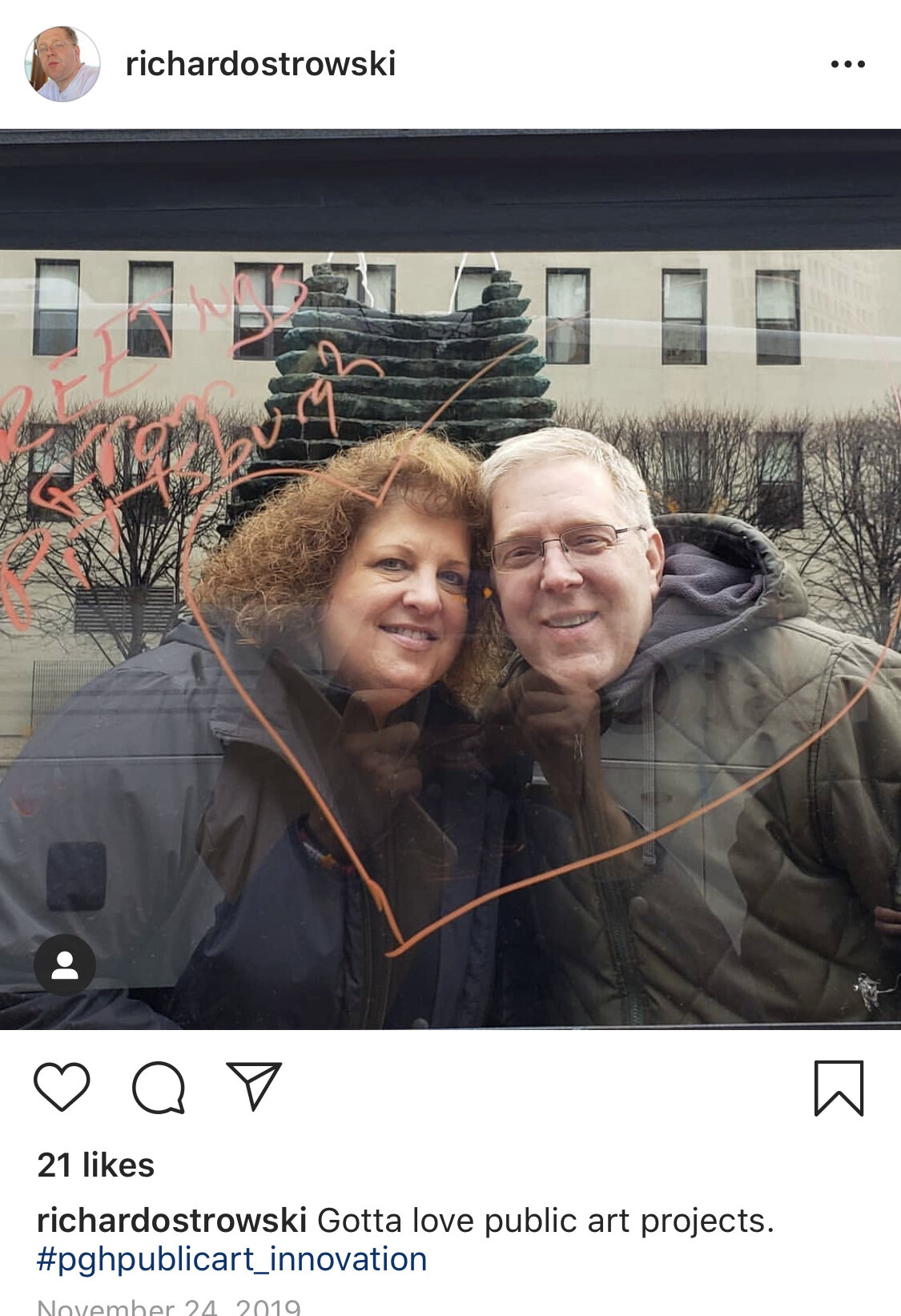
The Looking Glass
Reframe Public Arts Experience to Increase Engagement
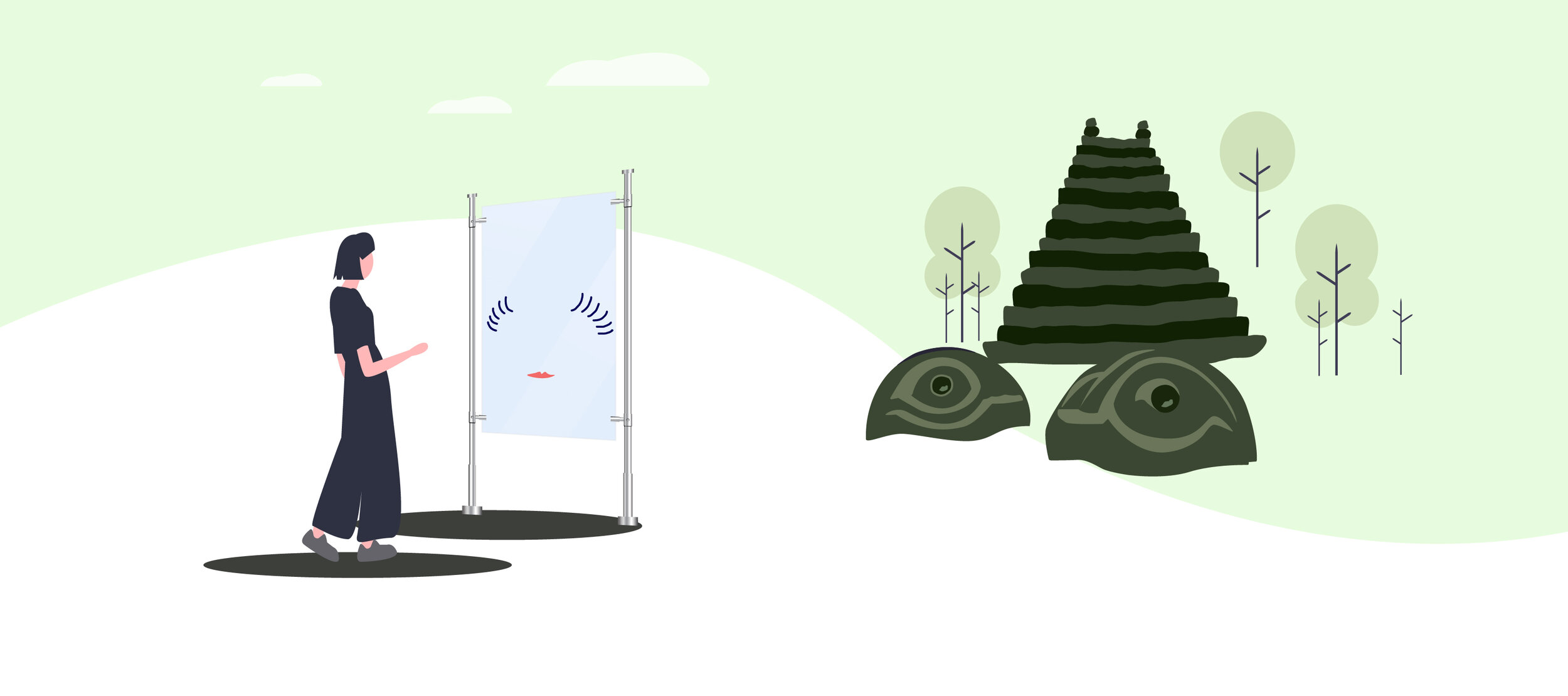
OVERVIEW
City of Pittsburgh has a long-standing investment in public art, but encountered difficulty justifying the cost. Therefore, our client, Metro 21, asked us to investigate how public art makes a city more livable and how technology can increase engagement.
Our team found that dynamic interaction is a crucial component to increase civic engagement. This led us to create the Looking Glass to empower city residents to see art in new ways while increasing community engagement.
This is primarily a UX research project for a class called User-Centered Research and Evaluation.
ROLE
UX Researcher
Project Manager
METHOD
Secondary Research
Observe & Intercept
Think Aloud Protocol
Storyboarding
Experience Prototype
TIMELINE
Sep. 2018 - Dec. 2018
(10 Weeks)
TEAM MEMBERS
Aaron Bishop
Aditi Magal
Haley Park
Ellie Ma
Emily Yang (Me)
PROBLEM
After seeing the same public arts for a few times, people become numb to the arts and no longer notice them.
They lose interest in public arts when the arts ceased to create a sense of novelty because the artworks fade into the background.
SOLUTION
The Looking Glass is an AR smart-board that empowers city residents the means to continually see the art in new ways while feeling connected to the community.
We learned that dynamic interaction and the ability to share their experience were essential for the residents to feel motivated to engage. Therefore, we generated a solution to help city residents to use public art as a mean to express their feeling while generating dynamic content for others.
MY CONTRIBUTION
Because this was a research-focused project, we all practiced and contributed to this project as user researchers. As a researcher, I developed insights that shaped our understanding of people's interaction with public art through data analytics.For example, I used data collected from a temporary PGH public art website to infer that the existing digital platform did not perpetuate a growing user base. This helped us eliminate one of our hypotheses that an online presence can increase engagement with public art.
Also, as the co-project manager, I coordinated our tasks and facilitated conversations by asking critical questions that encouraged discussions. I also played a crucial role in the ideation and defining phase. When we were deciding what problem to solve, I led our HMW sessions to narrow our scope. To clarify our HWM question, I whiteboarded all the possible issues we found from our exploratory research and explored their root cause using the 5 why technique.
This was a fun project to work as we progress from research to design. I had a great and fun team to work with. I hope in the future, I would get the chance to work with them again.
PROCESS
Starting with experiential and informational research
We individually visited a few public arts in Pittsburgh and conducted informational research through social media, stakeholder websites, etc. We found that,
Currently, there is no guide that informs residents on how they can or should engage with public art.
Public art experiences are static, especially among local residents.
People are more interested in the art when they notice others are interested.
Conducting quantitative analysis on existing data
Our client, Metro 21, had collected some data on the QR code that they placed at downtown public art locations. These QR code are linked to a temporary public art website that tracks engagement These data included information such as website traffic over a month, chatbot data, user's geolocation, etc. Analyzing these data through Tableau, my team and I learned that




Consolidate Findings Through Walk the Wall
Uncovering Pain Points and Opportunities of the Current State
To better understand the current state, we conducted observe and intercepts at downtown Agnes Plaza. Our goals were to gain insights into why and when local residents interact/don’t interact with public art.
After that, we conducted an Affinity Diagramming session that led us to identify three major areas where we saw potential opportunities: enhancing the motivation to engage, providing more guided experience, strengthening the community bond through shared experience.
During affinity clustering we found that,
People don’t feel motivated to revisit public arts because they think their experience would be the same.
City residents are more motivated to share their public art experience when they feel connected to the art/the surroundings.
People wants to understand the meaning of the art and the thought process behind the art creation
Assessing the suitablity of AR as new dimension of engagement
With a better understanding of the current state, we conducted a think aloud protocol on an AR app, WallaMe. It is an AR app that enables users to share digital messages by embedding them in the real world.
Our goal was to gauge the public’s familiarity with AR and see how receptive the public was to uncover hidden messages and post their thoughts through an AR medium.
Two major findings:
People don’t have a clear understanding of what they can do with an AR app.
People need more guidance on the app for them to understand what actions can be carried out.
At this point, we had a more concrete direction, we clarified our problem statement as the following,
How might we encourage more creative and dynamic engagement around public art to foster a sense of a community?
Utilizing speed-dating & storyboarding to validate insights
We ran several rounds of speed-dating with local residents and learned that people resonated the most with expressing their opinion and sharing their experience.
Quotes
“ I wanted to make contribution to this type of public art projects but I have never seen it before!”
“ I feel like collaborative art is endearing, especially when the community comes together.”
“I would feel comfortable to share if I know if it is done anonymously"
“I like that he put away his phone and really take in the experience”

Discussing our individual findings on our speed dating sessions
Capturing valuable interactions with experiential prototyping
Based on previous insights, we then conducted an experiential prototyping session to understand if people would engage creatively with public art and share their contribution.
From this experience prototype testing, we wanted to explore these two major aspects.
Would people want to engage with public art in a fun and creative way?
Whether using public art as a creative medium can facilitate conversation among citizens?
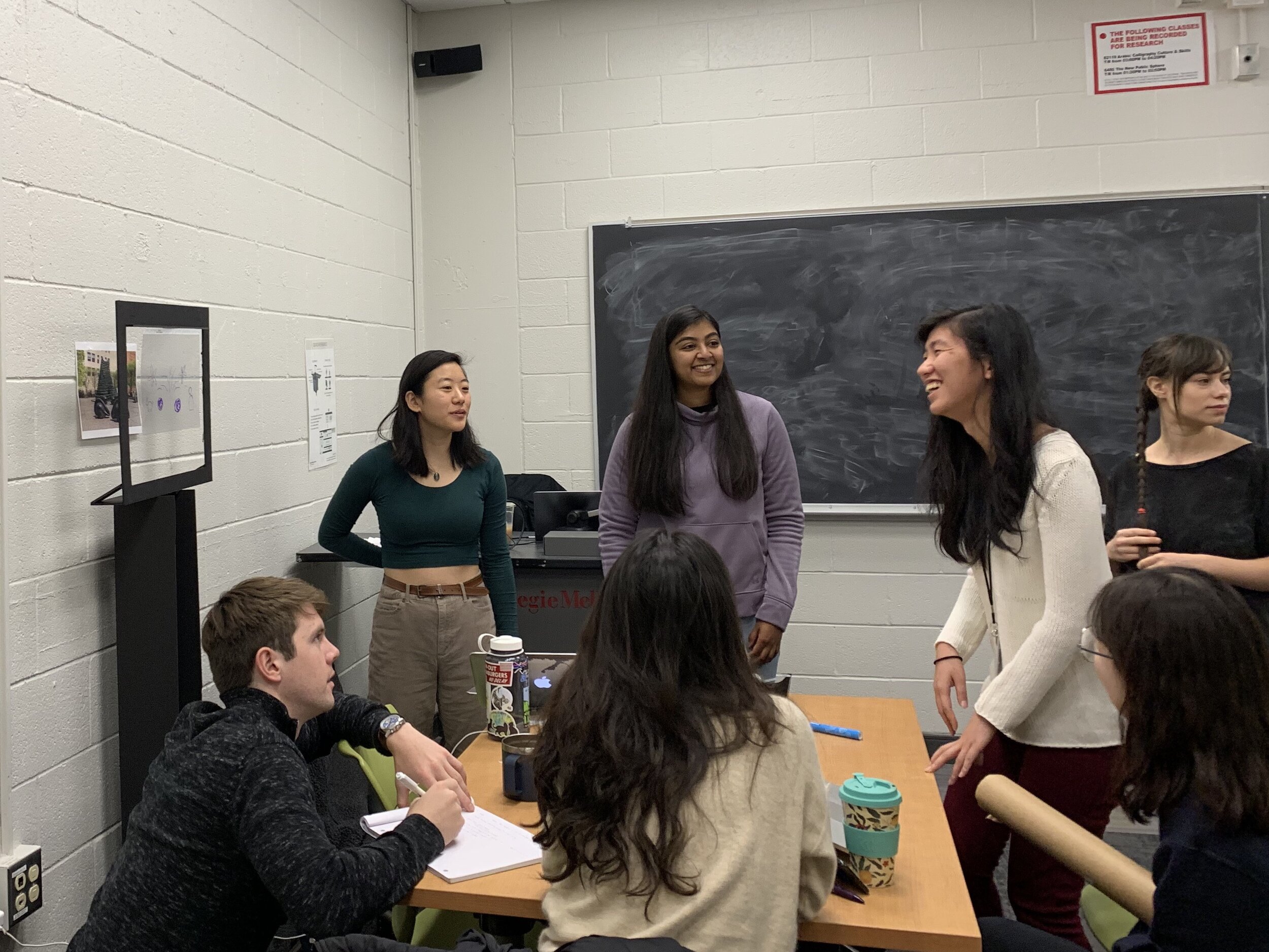
Despite, the cold and wet weather, we got overwhelming positive feedbacks from local residents. We captured some of these image by asking people to tag us on our instagram account. We learned in this activity that,
Although it wasn’t our intention, people used the frame as a way to take augmented pictures in front of the art.
People, especially residents, reported that they wanted to contribute to public art, but hadn’t had an opportunity to do so until that moment.
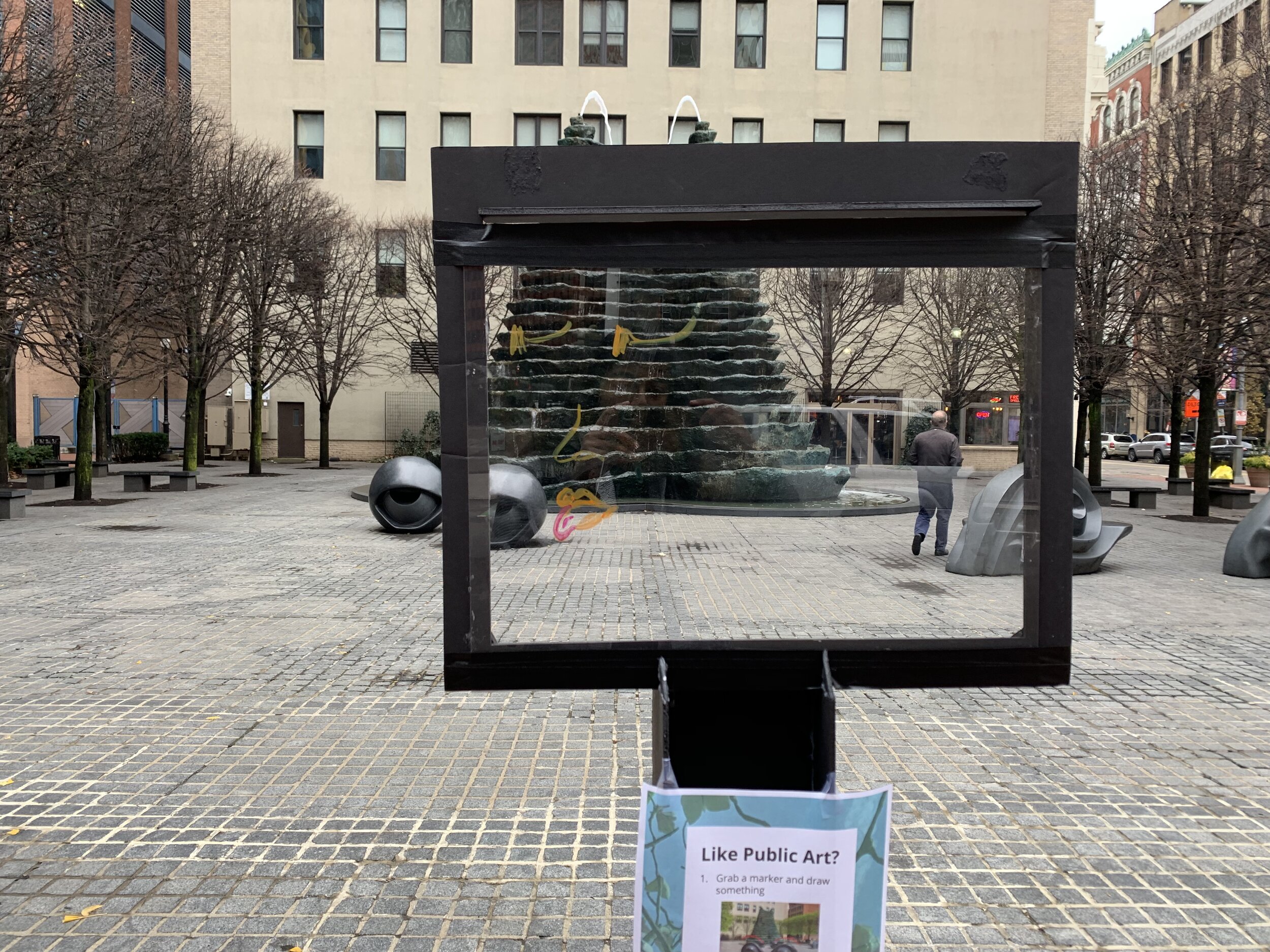
Our low fidelity prototype placed directly in front of the artwork.
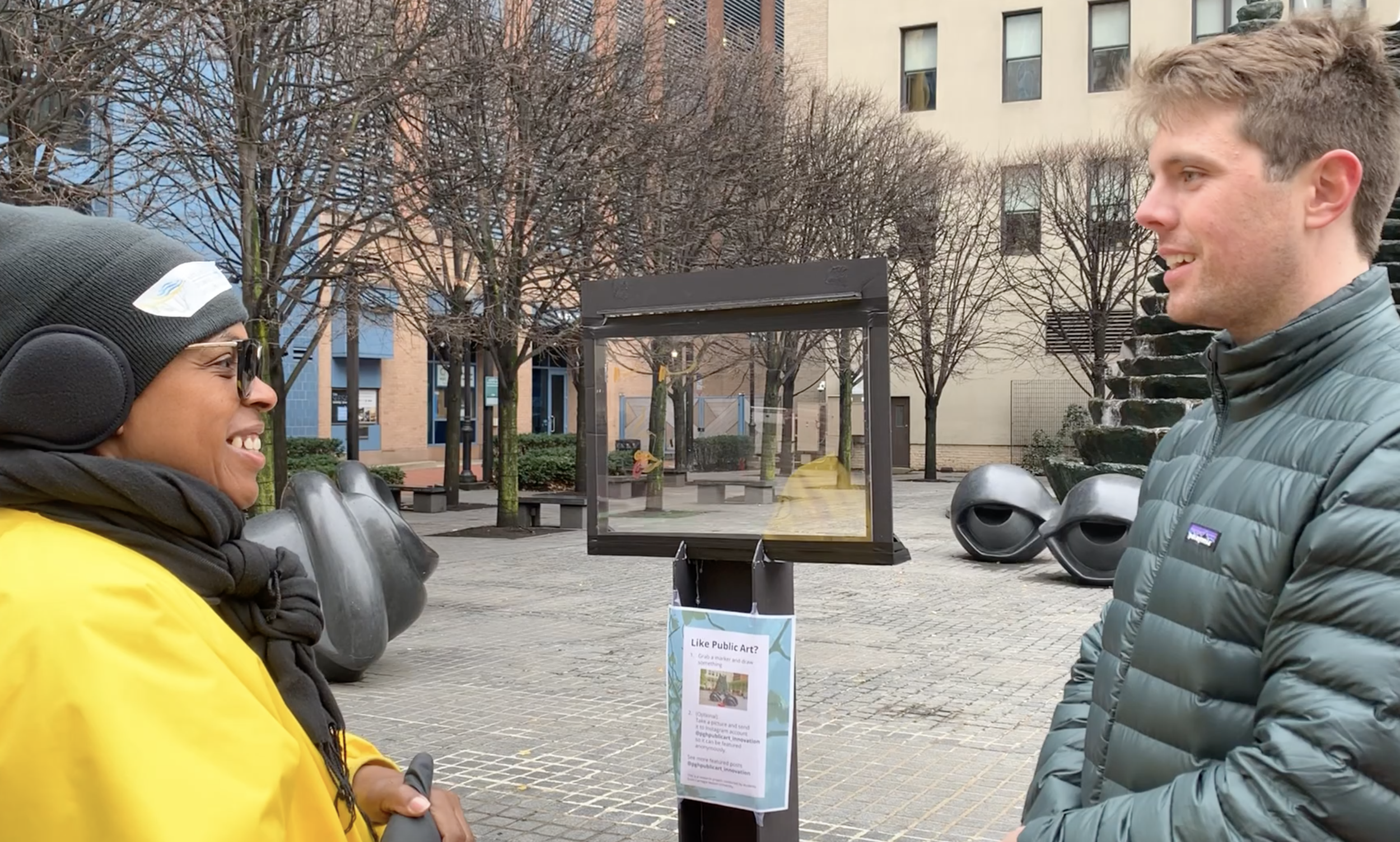
Intercepted the local resident to understand her motivation
Our Solution: The LookingGlass
The LookingGlass is a conceptual play on augmented reality, fixing an augmented reality interface to a specific physical location. It is a transparent smart-board placed near to a public art installation that viewers use to illustrate overtop the art, comment on the art, and take photographs of the augmented view of the art. The LookingGlass gives Pittsburgh residents a means to contribute to public art and continually see the art in new ways. It will also provide city government additional data on how often people engage at the art.


Presenting our solution to client
Our client was very happy to see that we captured several responses from local residents with our experience prototype. We obtained great feedback and our presentation and project was a success.


Pictures of me and my awesome teammates!


